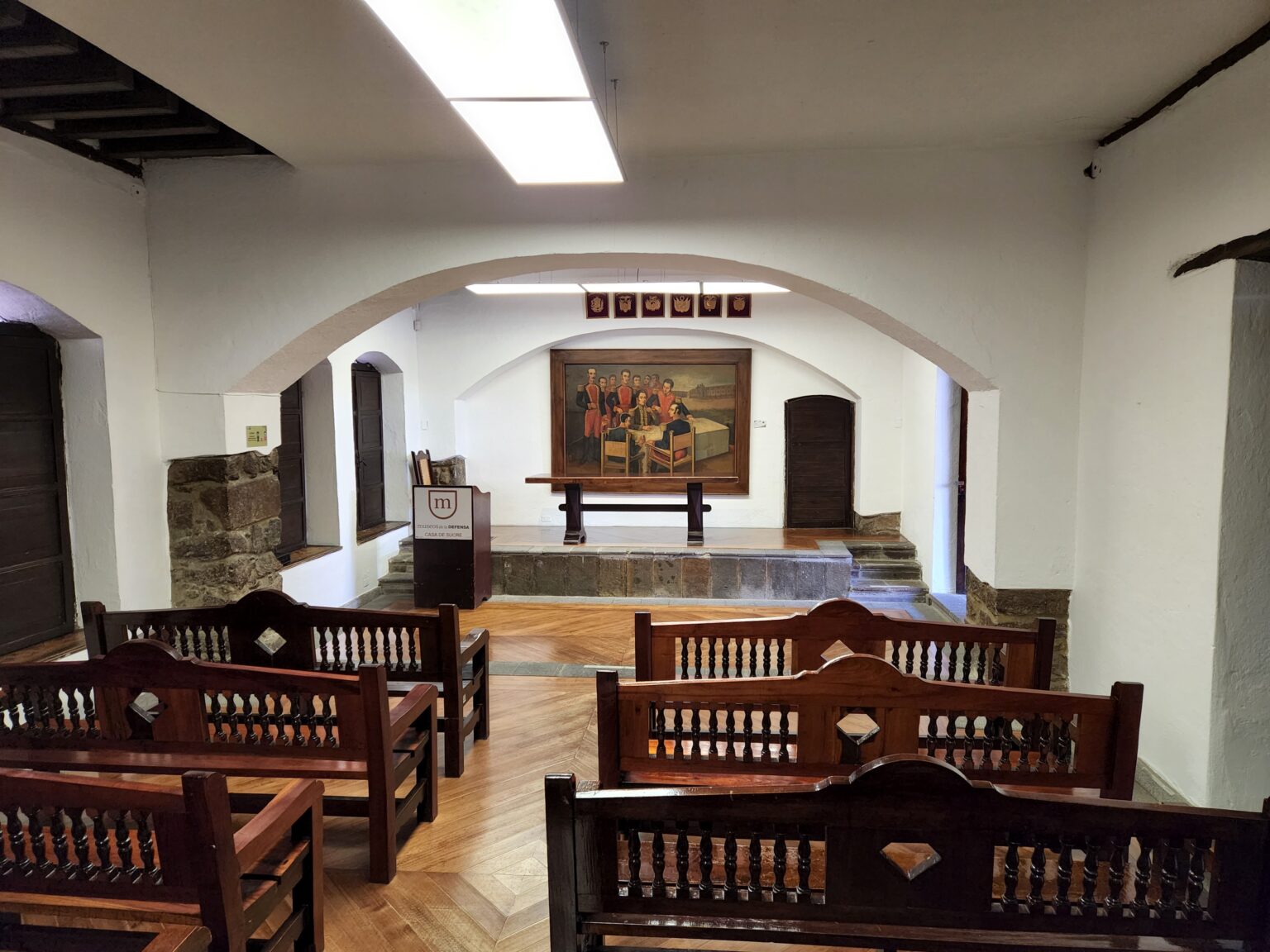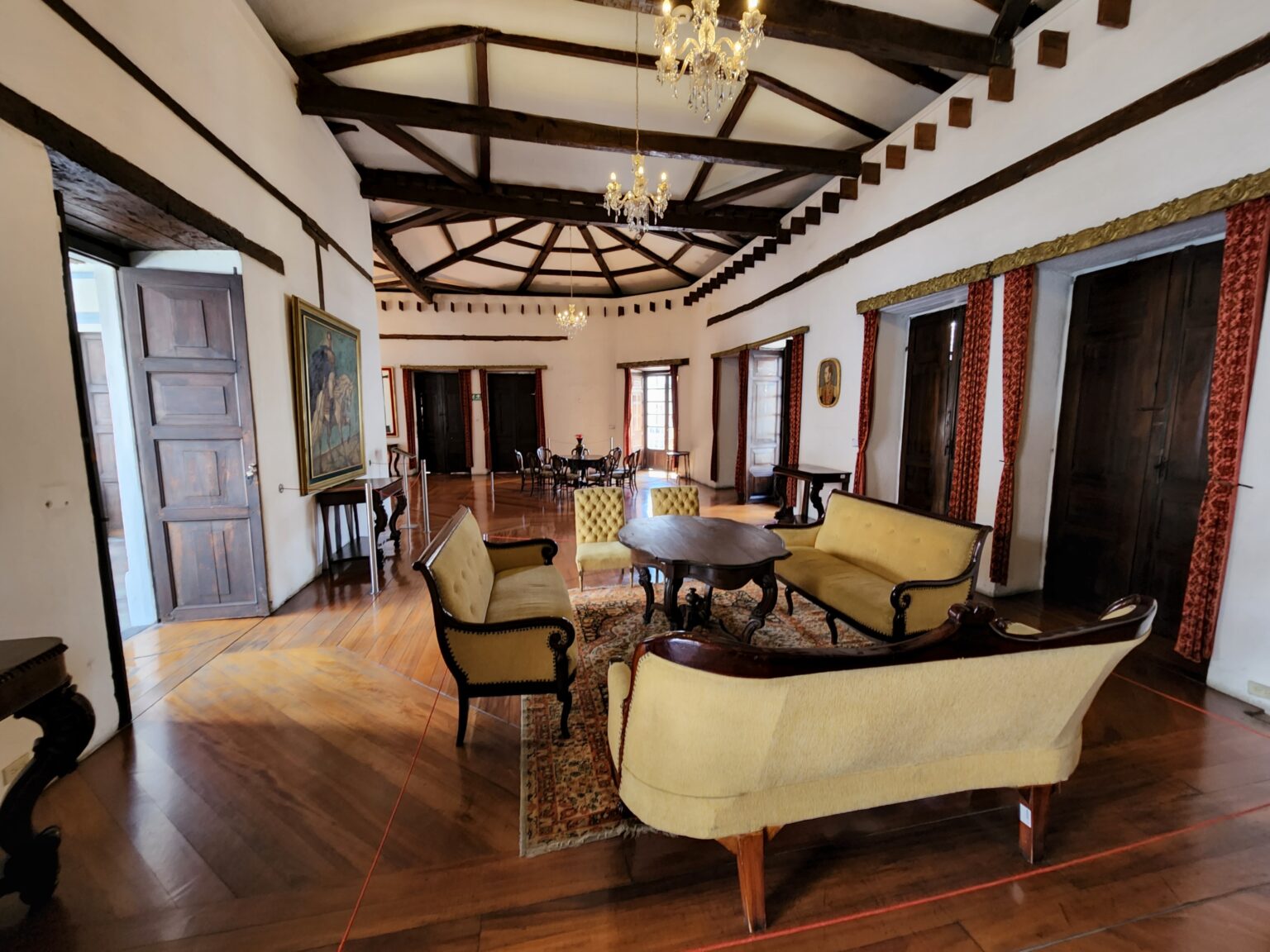Español
La residencia de Antonio José de Sucre y Mariana Carcelén fue construida en estilo andaluz virreinal de los siglos XVII y XVIII. Se organiza en dos plantas con corredores orientados al oriente y occidente. Actualmente funciona como museo, con espacios como la Sala de Próceres, Salón Principal, Oratorio, Alcoba, Comedor, patios y cocina, conservando muebles, obras y objetos de la época. Destaca su patio central con pileta octogonal y columnas de piedra y madera.
Los registros de la Casa Azul datan de 1648. Pasó a manos de la familia Carcelén en 1797 y fue adquirida por Sucre en 1827, quien dio instrucciones para su decoración desde Bolivia. Allí vivió con Mariana y su hija Teresa hasta su asesinato en 1830. Posteriormente fue heredada y vendida por distintos dueños. En 1945 fue declarada Monumento Nacional y en 1970 pasó al Ministerio de Defensa, que la convirtió en museo abierto al público.
El recorrido muestra cómo era una casa colonial quiteña y se enfoca en tres ejes: la historia del inmueble, la vida de Mariana y Sucre, y el vínculo entre Sucre y Bolívar en la independencia. Sus salas conservan mobiliario, pinturas religiosas y objetos originales, manteniendo viva la memoria del Mariscal y su legado en el Ecuador.


English
Architecture of the House
The residence of Antonio José de Sucre and Mariana Carcelén was built in the Andalusian viceregal style of the 17th and 18th centuries. It is arranged on two floors with corridors facing east and west. It currently serves as a museum, with spaces such as the Hall of Heroes, the Main Hall, the Oratory, the Bedroom, the Dining Room, patios, and the kitchen, preserving period furniture, works of art, and objects. Its central courtyard stands out with its octagonal fountain and stone and wood columns.
History of the Museum
Records of the Blue House date back to 1648. It passed into the hands of the Carcelén family in 1797 and was acquired by Sucre in 1827, who gave instructions for its decoration from Bolivia. He lived there with Mariana and their daughter Teresa until his assassination in 1830. It was later inherited and sold by various owners. In 1945, it was declared a National Monument, and in 1970, it was transferred to the Ministry of Defense, which converted it into a museum open to the public.
Site Museum and Themes
The tour shows what a colonial house in Quito looked like and focuses on three themes: the history of the building, the lives of Mariana and Sucre, and the connection between Sucre and Bolívar during the independence. Its rooms contain original furniture, religious paintings, and objects, keeping alive the memory of the Marshal and his legacy in Ecuador.